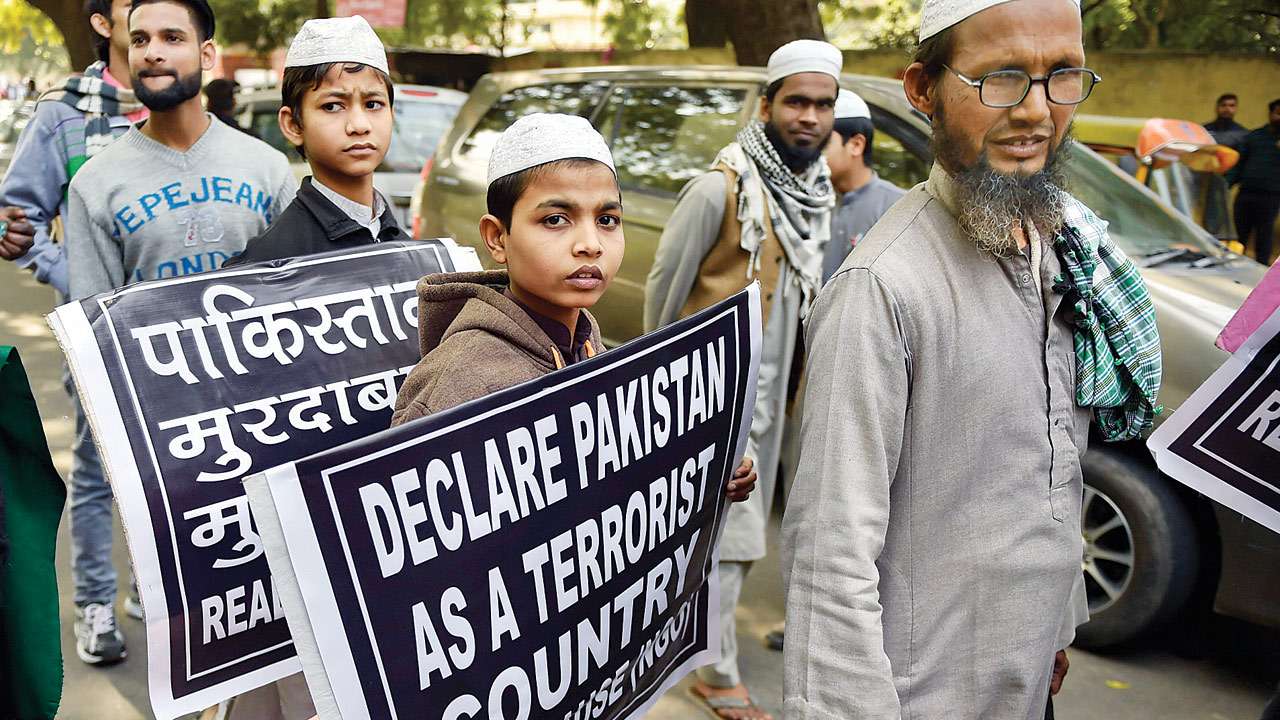
A major flaw in India’s approach to counter-terrorism has been to reduce the threat of terrorism to mere numbers of incidents and deaths.
The success and failure of a government in tackling the issue of terrorism has always been seen through the prism of de-escalation and escalation of a number of terror-related incidents and causalities respectively.
Governments often cite numbers to claim their success in effectively dealing with terrorism and the opposition also follows the same method to identify the former’s failures.
The ongoing issue of terrorism in Jammu and Kashmir (J&K) is a good example of this approach. The terrorist attack on a Central Reserve Police Force (CRPF) convoy on February 14, 2019, by Jaish-e-Mohammad (JeM), a terrorist group operating from Pakistan occupied Kashmir (PoK), highlights the inherent flaw, for one more time, in India’s engagement with terrorism.
At the superficial level, just by looking at the number of soldiers killed, it is being termed as a major terrorist attack in the recent past.
But looking beyond the numbers, it can also be seen as just another attack on the security forces by a terrorist group in J&K. Terrorist attacks on the security forces in and around J&K have been a regular phenomenon.
In the last five years, there have been multiple terror attacks on security forces in varying degrees in and outside J&K. Terror attacks on security forces in Uri, and Pathankot are some of the more spectacular ones.
According to the South Asia Terrorism Portal (SATP) database, starting from 2014 till February 13, 2019, there have been 674 incidents, which have claimed a total of 358 security forces, 202 civilians and 917 terrorists.
While these numbers underline the usual pattern of terrorist attacks in J&K, successive governments have overlooked some of the important aspects of terrorism in J&K, in particular.
One of the important aspects, at least in the last five years, has been repeated attacks on security forces. Such attacks send out two important messages: First, attacks on security forces expose the vulnerabilities of the latter in terms of its preparedness and demonstrate serious gaps in intelligence gathering and its execution.
Second, successive attacks on the security forces work to the advantage of the terrorists in terms of instilling fear among the civilians.
A second aspect of terrorism in terms of counter-terrorism measures adopted by the Indian state, have been dominantly, reactionary.
Reactionary counter-terrorism measures are limited to responding to incidents of terror, big or small. This has been a common counter-terrorism strategy of successive governments.
While India’s counter-terrorism policies have been reactionary in nature, such policies help terror activities in more than one way. By limiting terrorism to events and incidents, reactionary counter-terrorism policies overlook or inadequately deal with the multiple processes and stakeholders involved in terror activities.
In a Kashmir-like situation, where exists a number of socio-political and religious fault lines, it becomes vital to engage with multiple stakeholders who are directly or indirectly responsible for any sort of terror activity in some form or the other.
In this context, it becomes important to effectively deal with the long ongoing radicalisation process. The process of radicalisation in J&K has been a product of — along with other factors — the longstanding atmosphere of violence and counter-violence by the terrorist and the Indian state respectively.
The counter-violence by the state also caters to its policy of responding to terrorism as an incident.
While counter-violence is believed to be effective in terms of reducing violence level by the terrorists, it is a major factor contributing to the radicalisation process.
Such an important aspect of terrorism hasn’t been adequately dealt with in India.
Another major aspect of terrorism in J&K is about holding Pakistan responsible for actively initiating, pursuing and determining the results of terror attacks.
The role of Pakistan in accentuating terror activities in India is an undeniable fact. However, just by holding Pakistan responsible overshadows an important aspect of the role of local militants and support in executing the terror strikes.
If media reports were to be believed, the suicide attack on the CRPF convoy on February 14, 2019 was carried out by a local resident of Kashmir valley.
The role of locals in carrying out the terror strikes have been rather substantial. This is a critical, arguably the most important aspect of terrorism in J&K.
Such a critical aspect of terrorism in terms of local support and participation needs to be effectively dealt with. The state needs to explore multiple ways (not necessarily military responses) through which it can engage with the local stakeholders.
In a J&K like situation, the issue of terrorism shouldn’t be reduced to mere violence and statistical implications of attacks and fatalities.
The socio-political processes responsible for the ongoing radicalisation in the state need to be identified and engaged with. In this regard, the measures to counter radicalisation shouldn’t be limited to a military response.
Military responses to some episodes of terrorism in the past have had limited success. While one shouldn’t rule out the role of hard military responses completely, dealing with the ignored areas of radicalisation, local participation and garnering local support would offer major breakthroughs in dealing with the larger threat of terrorism.
Author is Assistant Professor, National Institute of Advanced Studies